Gathered in One: How the Book of Mormon Counters Anti-Semitism in the New Testament
$19.95
- “His thesis is fresh, provocative, and rigorously argued. A signal contribution to Book of Mormon studies.” — Terryl Givens
- “I recommend it to all who are interested in the history of Christian attitudes towards the Jews, as well as those working towards interfaith reconciliation and mutual respect.” — Yaakov Ariel
- “I highly recommend this timely and important book.” — Richard D.
- Rust
“Thoughtful and powerful.” — Trevan Hatch



Available in ebook for Kindle, Nook, Kobo, Google Play, and Apple.
Also available through Amazon.
Part of our Contemporary Studies in Scripture series
Download a free sample preview.
Book Description:
Since the Holocaust, a growing consensus of biblical scholars have come to recognize the unfair and misleading anti-Semitic rhetoric in the New Testament—language that has arguably contributed to centuries of violence and persecution against the Jewish people.
In Gathered in One, Bradley J. Kramer shows how the Book of Mormon counters anti-Semitism in the New Testament by approaching this most Christian of books on its own turf and on its own terms: literarily, by providing numerous pro-Jewish statements, portrayals, settings, and structuring devices in opposition to similar anti-Semitic elements in the New Testament; and scripturally, by connecting with it as a peer, as a divine document of equal value and authority, which can add these elements to the Christian canon (as the Gospel of John can add elements to the Gospel of Matthew) without undermining its authority or dependability.
In this way, the Book of Mormon effectively “detoxifies” the New Testament of its anti-Semitic poison without weakening its status as scripture and goes far in encouraging Christians to relate to Jews respectfully, not as enemies or opponents, but as allies, people of equal worth, importance, and value before God.
AuthorCast Interview with the Author:
Comprehensive Table of Contents:
.
Preface
Acknowledgements
1. Gathered in One
2. A Book Proceeded Forth
Anti-Semitic Statements
Anti-Semitic Portrayals
Anti-Mosaic Portrayals and Settings
Anti-Supersessionist Epistles
Supersessionist Structure
The Ultimate Solution, the Ultimate Problem
3. A Record to Establish the Truth of the First
Countering Anti-Semitic Statements
Redeeming “the Jews”
Challenging “Pharisaism”
Acquitting “All the Jewish People” of Killing Jesus
Rejecting Anti-Jewish Covenantal Rejectionism
4. We Did Observe to Keep the Commandments
Portraying Mosaic Observance Positively
Portraying Mosaic Holy Days as Spiritually Vital and Vibrant
Summary
5. Think Not That I Am Come to Destroy the Law
The Presentation of the Sermon on the Mount
The Institution of Christian Communion
The Appearance of the Resurrected Jesus
Summary
6. That the Last May Be First and the First May Be Last
How Acts Structures the New Testament
How the Book of Mormon Restructures Acts’ Structuring
7. I Will Gather Them In
Bibliography
Scripture Index
Subject Index
Q&A with the Author:
.
Q: For some, hearing that the New Testament contains anti-Semitic language can be challenging. Can you provide a few examples of anti-Semitic rhetoric in the New Testament?
A: Yes. However, first I would like to clarify that I do not think that the New Testament as a whole is anti-Semitic. I do think that the New Testament contains many anti-Semitic statements, anti-Semitic portrayals, anti-Semitic settings, and anti-Semitic structuring elements that together form a kind of literary tide that pulls its readers towards an anti-Semitic point of view, but that is not the same as saying the entire New Testament is anti-Semitic or that anti-Semitism is its major theme.
The Gospel of John, for instance, not only contains a statement where “the Jews” are told that their father is the devil (John 8:44), but they are portrayed explicitly as questioning Jesus (2:18), as accusing him of being in league with the devil (8:48), and as instilling fear in his followers (7:13; 19:38; 20:19). In this Gospel, “the Jews” function as a foil to everything Jesus stands for and teaches. They are from beneath while Jesus is from above; they are of this world while Jesus is not (8:22-23), and they, unlike the enlightened Jesus, love “darkness rather than light, because their deeds are evil” (3:19).
The Gospel of Matthew reinforces this view of Jews through its portrayal of Pharisees. In this Gospel, Pharisees are hypocritical (Matt. 16:3), judgmental (9:11), rule-bound (12:2), scheming (v.14), stupid (v. 24), sign-seeking (v. 38), superficial (15:1), easily offended (v.12), spiritually blind (v. 14), corrupt (12:33), petty (23:23), tricky (22:15), prideful (16:6), and murderous (12:14). True, the Pharisees are only a subgroup of Jews, but without many examples of other subgroups acting differently, they seem to represent Jews as a totality.
In addition, the Gospel of Matthew uses settings to undermine the viability and validity of Jewish practices. The Last Supper, for instance, is set as a Passover Seder and shows Jesus commenting on two of its most important elements: the bread and the wine. However, in this Gospel, the Mosaic meanings of these elements are not mentioned or discussed as stipulated by the Law of Moses (Ex. 12:25–27). Instead, they are presented simply as food items that have lost their Mosaic meaning and can, therefore, be easily repurposed as memorials of Jesus’s soon to-be-dead body and spilt blood. In this way, the Gospel of Matthew presents Passover, much like the Jews themselves, as something devoid of true spirituality and in need of replacement.
Q: Is there scholarly consensus regarding anti-Semitism in the New Testament? Can you provide examples of scholarly debate on the topic?
A: I think so, yes. Many scholars, however, prefer to use the term “anti-Judaic,” feeling that the New Testament attacks Jews more as members of a certain faith, which can change, than as members of an ethnic or genetic group, which cannot. I have elected to use “anti-Semitic” in my book because 1) most of my sources use that term, 2) “anti-Semitic” is the more common, inclusive term, and 3) in practice the distinction between these two approaches is not always clear—even in the New Testament. Jesus in the Gospel of John, for instance, does not tell “the Jews” that the devil is their spiritual leader; he says that the devil is their “father” (John 8: 44). Similarly, in Matthew the Jewish multitude cries out for his blood to be upon their “children, not upon their religious descendants (Matt. 27:25). Scholars, as well as many devoted Christian ministers, are disturbed by this scene in the Gospel of Matthew. It seems to brand all Jews throughout time as “Christkillers” and has been used to justify numerous anti-Jewish atrocities. As a result, many of these scholars, ministers, and laypeople deny that it ever happened. They point out that there is no record of any Roman governor ever releasing prisoners on Passover and question the logic of such a custom. After all, why would a Roman official charged with keeping the peace run the risk of releasing his most dangerous enemies back into society? It makes no sense. These scholars and ministers similarly dispute the Gospels’ portrayal of Pilate as a spiritually ambivalent government official who could be swayed by the voice of a Jewish multitude. According to Roman records, not only did Pilate place Roman images inside the Temple precincts in direct opposition of the will of his subjects, but he also confiscated Temple funds when they refused to pay their taxes. Furthermore, when people gathered before him to protest, he had his soldiers disguise themselves, infiltrate the crowd, and slaughter them all. The majority of scholars and ministers see Pilate as a merciless ruler who would have had no qualms whatsoever about crucifying Jesus. However, by doing so, Pilate presented early Christians with a problem. After all, they had to live and work and worship within the Roman Empire. It would not be wise to paint a Roman official as a murderer, particularly as the murderer of the Son of God. Many scholars and ministers, therefore, see this scene as a fictional embellishment designed to shift the blame for Jesus’s death from the Romans to the already despised Jews.
Q: Can you provide an example or two of how the Book of Mormon counters anti-Semitism in the New Testament?
A: I can think of no more powerful condemnations of anti-Semitic behavior than these:
O ye Gentiles, have ye remembered the Jews, mine ancient covenant people? Nay; but ye have cursed them, and have hated them, and have not sought to recover them. But behold, I will return all these things upon your own heads; for I the Lord have not forgotten my people. (1 Ne. 29:5)
Yea, and ye need not any longer hiss, nor spurn, nor make game of the Jews, nor any of the remnant of the house of Israel; for behold, the Lord remembereth his covenant unto them, and he will do unto them according to that which he hath sworn. (3 Ne. 29:8)
Furthermore, these are not simply official declarations issued by a church or statements from an ecclesiastical leader. In the former, it is God who chastises non-Jews (probably Christians) for persecuting Jews; and in the latter, it is Mormon, a prophet of God, who commands these same Christians to cease oppressing the Jews. Also, notice that these condemnations do not comment upon any particular passage in the New Testament, nor do they challenge the veracity of any specific New Testament event. However, given their clarity of expression, they make it very difficult for Christians to interpret the New Testament anti-Semitically. In this way, the Book of Mormon does not change the New Testament’s words or call into question their ability to convey divine messages to their readers directly. However, for believers, it alters how the New Testament’s words are understood. When joined with the New Testament in the Christian canon, the Book of Mormon overwhelms the anti-Semitic statements, portrayals, settings, and structural elements with more numerous and more sweeping pro-Jewish statements, portrayals, settings, and structural elements of its own. In this way, the Book of Mormon turns the literary tide in the New Testament and causes it to flow in the opposite direction.
Q: How does the Book of Mormon limit Jewish involvement in Jesus’ death?
A: For the most part, the prophets in the Book of Mormon seems more interested in what Jesus’s death accomplished than in who killed him. Nephi, for instance, recounts his vision of Jesus’s death saying only that Jesus “was lifted up upon the cross and slain for the sins of the world” without specifying who did the lifting (1 Ne. 11:33), and Abinadi similarly prophecies that Jesus will be “led, crucified, and slain” again without mentioning who will do the leading, crucifying, and slaying (Mosiah 15:7). The same is true for Samuel the Lamanite (Hel. 13:6) and even Jesus (3 Ne. 11:14). Furthermore, when these prophets do attempt to identify Jesus’s killers, they use vague terms such as “the world” or “wicked men” (1 Ne. 19:7–10), or they employ phrases that, while they may appear at first to indict all Jews everywhere, actually absolve the majority of Jews of any involvement whatsoever in Jesus’s death. Jacob’s “they at Jerusalem” (2 Ne. 10:5), for example, may seem to some readers to indicate that all Jews participate somehow in Jesus’s crucifixion. These readers link this phrase with “the Jews” in verse 3 and see it as affirming universal Jewish culpability regarding Jesus’s death. However, during Jesus’s lifetime, only a small percentage of the world’s Jews lived in Jerusalem. During that time, most Jews were still residing in Babylon or were scattered throughout the eastern Mediterranean and beyond—as Jacob, who as one of the most far-flung of these Jews, knew very well. In other words, instead of serving as a synonym of “the Jews,” “they at Jerusalem” functions as the last element in a grammatical sequence that shrinks the number of Jews connected to Jesus’s death from all Jews everywhere to “those who are the more wicked part of the world” to just those Jews living in Jerusalem during the early first century. In a similar way, 2 Nephi 10 also softens “they shall crucify him” of verse 3 to “they . . . will stiffen their necks against him, that he be crucified” and complicates their complicity by stating in verse 5 that they do so not because of some deep-seated personal conviction but “because of priestcrafts and iniquities.”
Q: What is supersessionism and how does the Book of Mormon refute it?
A: Supersessionism is the traditional Christian doctrine that the Jews have been disobedient for so long, failing to follow their own law as well as murdering its originator (Jesus), that their covenantal connection to God has been revoked and they have been replaced by Christian Gentiles. Statements in the Book of Mormon clearly refute this notion by confirming that the Jews remain God’s “covenant people” (2 Ne. 29:4–5) even after Jesus’s death (Morm. 3:21), and by affirming that despite being scattered “upon all the face of the earth,” the Jews will one day be “armed with righteousness and with the power of God in great glory” (1 Ne. 14:14), that they will be delivered from their enemies (2 Ne. 6:17), and that pure people everywhere will seek “the welfare of the ancient and long dispersed covenant people of the Lord” (Morm. 8:15). In addition to these statements, the portrayal of the Nephites and Lamanites further reinforces the Jews’ ongoing covenantal connection to God. In the Synoptic Gospels, Jews, as Pharisees, are portrayed as so hypocritical and murderous (at least towards Jesus) that it is hard to see them as continuing in God’s covenant. In the Book of Mormon, Nephites also struggle with hypocrisy as do the Lamanites with murder, and yet never are these New World Jews removed from God’s covenant or detached from God’s care. Missionaries go to them, and often they repent, but even when they do not and their civilization disintegrates into self-destructive chaos, God continues to seek after their descendants and sees them always as heirs to the covenantal promises given to Abraham, Isaac, and Jacob.
Q: How should Latter-day Saints relate to Jews?
A: With charity, just like Nephi (2 Ne. 33:8), and not as potential converts. It is significant that the Book of Mormon never uses the words “convert” or “conversion” in connection with Jews. Instead, it employs “persuade” and “convince,” and presents Jesus as the only person authorized to do this persuading and convincing. As he tells the Nephites:
And then will I gather them in from the four quarters of the earth; and then will I fulfil the covenant which the Father hath made unto all the people of the house of Israel. . . . And then will I remember my covenant which I have made unto my people, O house of Israel, and I will bring my gospel unto them. (3 Ne. 16:5, 11)
This repetition of the pronoun “I” in this passage and in 3 Ne. 21:1 indicates to me that Christians should not press Jews to accept Jesus. They should instead have enough faith in their Master to let him do what he has covenanted to do without any help or interference from them. Christians should embrace Jews as brothers and sisters in God’s covenant, as true friends with whom they can talk, play, work, worship, hang out, enjoy, and learn from, especially in regards to the Scriptures. As Nephi reminds his readers:
I know that the Jews do understand the things of the prophets, and there is none other people that understand the things which were spoken unto the Jews like unto them, save it be that they are taught after the manner of the things of the Jews. (2 Ne. 25:5)
Q: What are you hoping readers will gain through this book?
A: I hope my readers will see more clearly just how the Book of Mormon can augment and enhance the Bible without undermining its scriptural authority or reliability. I hope they will also feel a closer, more informed, more appreciative connection with Jews. I think many Christians are fairly ignorant about Jews and are somewhat split in their opinion of them. Through movies such as “Schindler’s List,” “Denial,” and “The Pianist,” they may feel sympathetic towards Jews because of persecutions they have suffered and the pains they have endured. However, because of the New Testament, they may also be inclined to see Jews as chronic nitpickers who hypocritically follow superficial religious practices. With this book, I hope to resolve this difference by showing my readers that there is more to the Jews than is offered in the New Testament, that Mosaic practices remain relevant today, that the Law of Moses has been observed admirably by an admirable people; and that Jews have much to teach Christians religiously, ethically, and scripturally. They certainly have taught me much.
Bradley J. Kramer
September 2019
Praise for Gathered in One:
“Lacking a tradition of critically reading the scriptures, some Latter-day Saints will be surprised at Kramer’s exposition of New Testament anti-Semitism (and at the revelation that most Christian traditions are wrestling through that textual reality). More important, however, is Kramer’s argument that the Book of Mormon does important cultural work in rehabilitating and celebrating the role of the Jewish people in God’s Restorationist agenda. Not only does this scripture not mimic or extend a New Testament rhetorical tradition—it engages and re-writes it. His thesis is fresh, provocative, and rigorously argued. A signal contribution to Book of Mormon studies.” — Terryl Givens, author of By the Hand of Mormon: The American Scripture that Launched a New World Religion
“Gathered in One is a special book. It allows us to consider how the Book of Mormon differs from and serves as a correction to unfavorable attitudes of passages in the New Testament towards Jewish groups. Bradley Kramer has pursued a commendable mission in this book. He examines primary texts of the Mormon tradition with the aim of opening the gates to more amicable and appreciative relations towards Jews, Latter-day Saints, and others. Impressed by the book and its scholarship and attitude, I recommend it to all who are interested in the history of Christian attitudes towards the Jews, as well as those working towards interfaith reconciliation and mutual respect.” — Yaakov Ariel, professor of religious studies at the University of North Carolina at Chapel Hill and author of Evangelizing the Chosen People: Missions to the Jews in America, 1880–2000
“Gathered in One is bold! Its approach is both thoughtful and powerful. In it, Bradley Kramer provides his readers not only with new insights into the Book of Mormon but familiarizes them with the nagging problem of anti-Semitism within Christianity. The solutions he finds in the Book of Mormon to this problem are refreshing—and timely.” — Trevan Hatch, author of A Stranger in Jerusalem: Seeing Jesus as a Jew
“Tragically (and mistakenly, in my opinion) many Christians have for centuries found support for anti-Semitic attitudes and actions in the New Testament. Gathered in One shows how some Christian scholars and ministers have in recent years fought against such a connection and demonstrates how the Book of Mormon contributes to this laudable effort by adding numerous pro-Jewish elements to the Christian canon in direct opposition to seemingly anti-Jewish elements in the New Testament. In this way, the Book of Mormon, according to Kramer, seeks to establish a more peaceful, more appreciative, more mutually productive relationship between Christians and Jews. I highly recommend this timely and important book.” —Richard D. Rust, author of Feasting on the Word: The Literary Testimony of the Book of Mormon
“Kramer demonstrates his devotion to the Book of Mormon in the pages of Gathered in One by offering a careful and respectful reading of the Nephite record in conjunction with other sacred texts. . . . As Kramer convincingly shows, the Book of Mormon is a powerful tool in the fight against anti-Semitic prejudice and is just as relevant today as it has ever been.” — Book of Mormon Central
“There's much more to this fascinating read. It addresses a harsh truth, which is that anti-Semitism clings to Christianity. However, without tarnishing the spiritual gifts of the New Testament, this problem can be addressed. The Book of Mormon serves as a guide to resolving this uncomfortable issue.” — Doug Gibson, Mormon History and Culture
“This is a profound book. It’s reframed how I see my role in . . . God’s historical plan of redemption, his actions with Jews and Gentiles. In other words, salvific history.” — Bryan Sebesta, Association for Mormon Letters
About the Author:
 Bradley J. Kramer holds an MA in English from the University of North Carolina at Chapel Hill and a BA in English from Brigham Young University with a minor in Near Eastern Studies. As the son of an LDS mother and a non-LDS father, he has had a life-long interest in interfaith dialogue. For the last several years, he has been a regular participant in Torah and Talmud classes at a local synagogue in Durham, North Carolina, and has helped arrange joint Mormon-Jewish study sessions and other educational exchanges. He is the author of Beholding the Tree of Life: A Rabbinic Approach to the Book of Mormon and has given several presentations to local and regional groups on the affinities between Mormons and Jews and is a regular speaker at comparative religion classes. Bradley has worked professionally as a writer and editor and is married to the former Nancy Lubeck. They have three children and three grandchildren.
Bradley J. Kramer holds an MA in English from the University of North Carolina at Chapel Hill and a BA in English from Brigham Young University with a minor in Near Eastern Studies. As the son of an LDS mother and a non-LDS father, he has had a life-long interest in interfaith dialogue. For the last several years, he has been a regular participant in Torah and Talmud classes at a local synagogue in Durham, North Carolina, and has helped arrange joint Mormon-Jewish study sessions and other educational exchanges. He is the author of Beholding the Tree of Life: A Rabbinic Approach to the Book of Mormon and has given several presentations to local and regional groups on the affinities between Mormons and Jews and is a regular speaker at comparative religion classes. Bradley has worked professionally as a writer and editor and is married to the former Nancy Lubeck. They have three children and three grandchildren.
More Information:
173 pages
ISBN 978-1-58958-709-0 (Paperback); 978-1-58958-710-6 (Hardcover)
Published September 2019


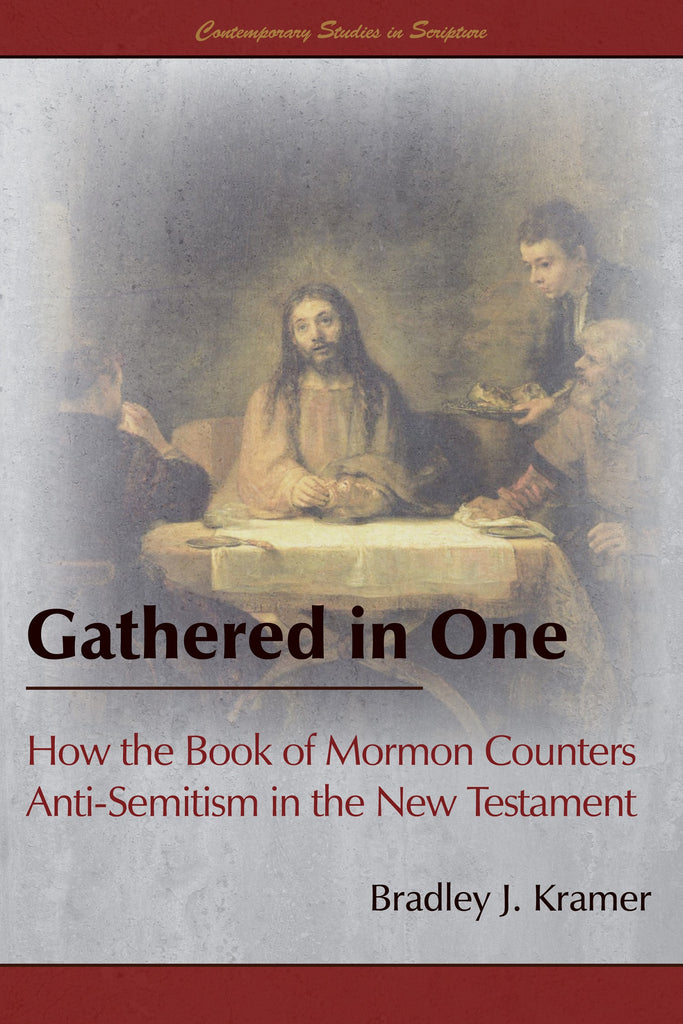


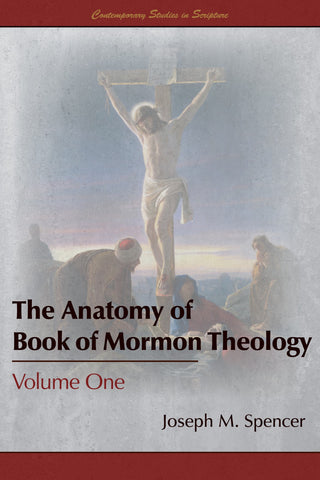
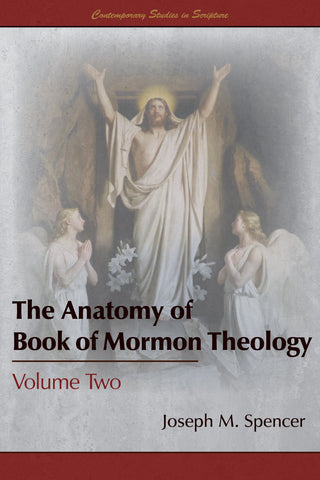
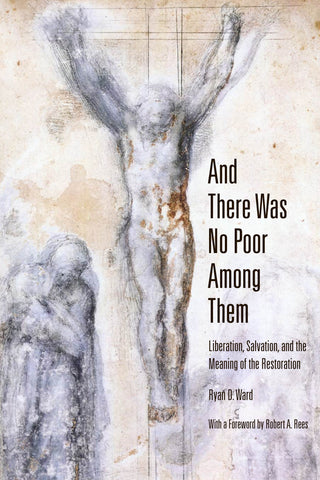
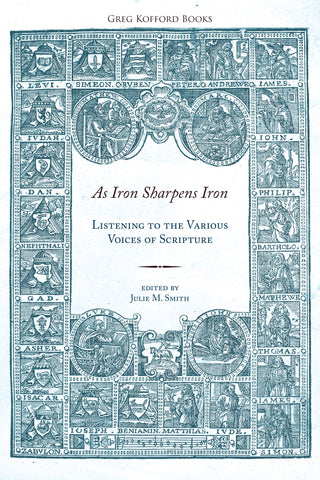
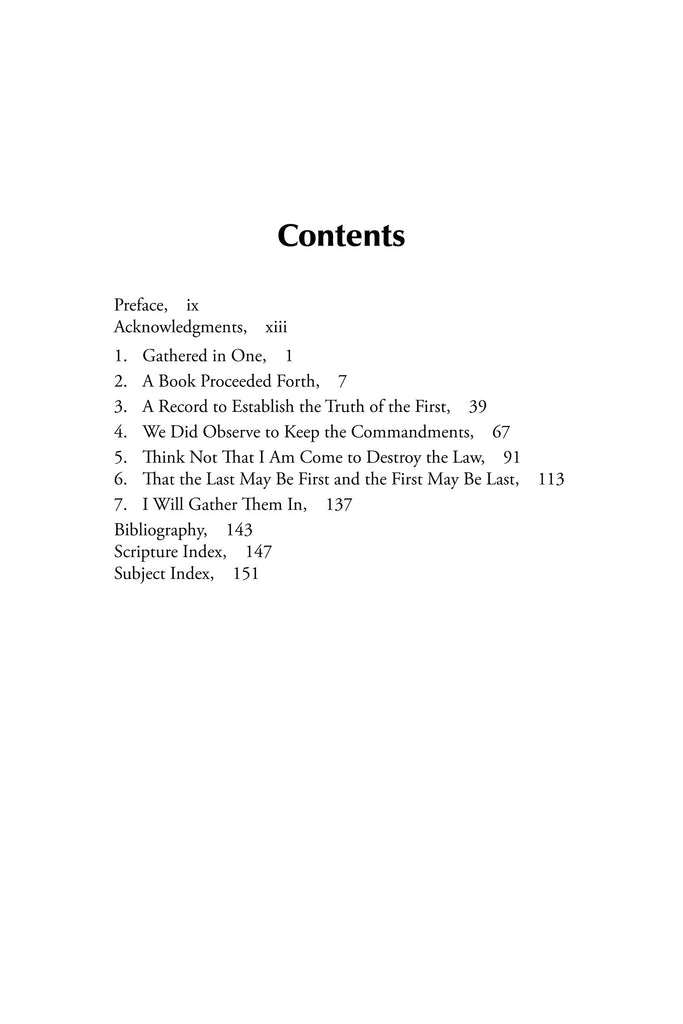
Share this item: